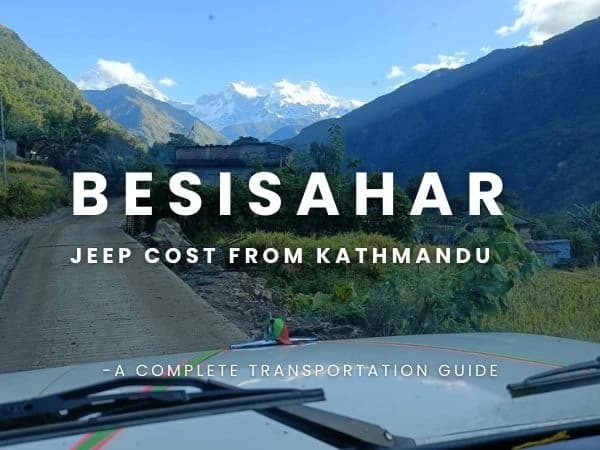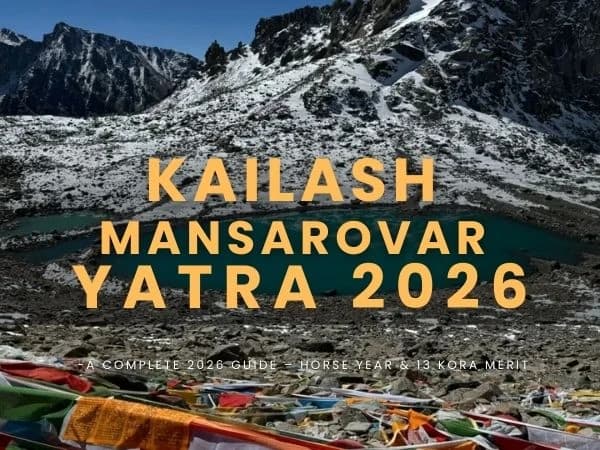Best Season to See the Waterfall:
You can visit a waterfall any time of the year. However, the monsoon (June to August) is when the waterfalls are most impressive. Heavy rainfall leads to strong and gushing water flows, creating breathtaking cascades. However, if the route includes a hike to the waterfall, you have to be extra careful because of slippery trails, landslides, and leeches.
Likewise, post-monsoon (autumn) from September to November is another great time to see waterfalls. The winter season (December to February) sees less crowd, however the waterfall may have reduced flow. And spring (March to May) makes the waterfall landscape phenomenal because of all the flowers and vegetation blossoming.
Things to consider before you visit a waterfall:
- Check the local weather forecast and trail conditions before planning your visit to any waterfall.
- Some waterfalls may be located at higher elevations, so accessibility can be affected by snow or difficult terrain during the winter months.
- Always prioritize safety and follow any regulations or guidelines provided by local authorities and park management.
Best 10 Waterfalls in Kathmandu:
1) Lauke Waterfall/Jharana:
✅Location: Kakani, Nuwakot
✅Duration: Around 2 hours
✅Transportation: Bike, cycle, car and local bus as well
Lauke waterfall is one of the most famous waterfalls near the Kathmandu valley. This waterfall is situated at Kakani Nuwakot. The main source of the Jhor waterfall is the water from natural spring water and seasonal rainwater. It is also commonly known as chhahare waterfall by locals.

From the parking area, the waterfall is located within 15 minutes of walk. The water is clean, so you can take a shower or just keep your feet and enjoy the refreshing coldness of the water falling from the cliff.
This place offers a serene oasis in the bustling Kathmandu valley. You will be surrounded by fresh air and forests here. From Kathmandu, it takes around 2 hours ride to reach Lauke Waterfall. You can ride a bike, cycle, car and local transportation as well.
Nearby this waterfall towards Kathmandu there is also another waterfall 'Jhor' and a temple called Baundeshwor situated here. Jhor waterfall is comparatively smaller than Lauke Waterfall. Many locals also visit the Jhor waterfall with their friends and families for a picnic.
How to reach the Lauke Waterfall?
- Samakhusi-Greenland-Grande Hospital-Tokha-Jhor-Lauke Waterfall
Note: You can also reach here from Kakani, Nuwakot. However during the monsoon season the road condition there is bad and you will need to hike around 2.5 hours round trip afterwards you got off the bus. So, it is best that you go towards tokha from Samakushi chowk.
2) Fung Fung Waterfall:
✅ Location: Chhahare, Kakani, Nuwakot
✅ Duration: 1.5 to 2 hours of driving and approx. 30-45 minutes of walking from the last parking area
✅ Transportation: Car, bike, scooter and local bus.

Fung Fung Waterfall (Phung Phung Jharana) is one of the waterfalls located at the distance of approximately 25 to 30 km from Kathmandu. It is situated in Chhahare village of Nuwakot which is near Kakani Ranipauwa. The waterfall is located in a quiet forest and also surrounded by natural beauty which includes traditional hillside villages. It also does not form a single stream because during the monsoon seasons, it transforms into strong cascades
Along the way there are local trails with small farming and residential communities that are wonderful to observe. The fung fung waterfall is peaceful and relaxed making it very easy for a one day trip from Kathmandu. Best season to visit this waterfall is during the monsoon and early autumn months. It is perfectly suited for adventure motorcycle drivers, nature lovers, and photographers.
How to reach the Fung Fung Jharana?
- Machhapokhari, Bypass-Mudku-Tin Peeple-Kakani-Ranipauwa-Fung fung Waterfall
3) Simba Falls:
✅ Location: Manikhle village, Lalitpur
✅ Duration: 2 hours of driving and 45 minutes of walking from the last parking area
✅ Transportation: Car, bike, and scooter
Simba Falls is the combination of more than 5 different small waterfalls. It is located in the Manikhle village, Lalitpur, a rural yet traditional Tamang village located approximately 50 kilometers away from Kathmandu on a hilltop. The elevation of this village is 2,000 meters from sea level.
The surrounding view, including the Simba Falls, is phenomenal from here. The name of this waterfall, Simba, means cold in the Tamang language as water is always cold here. From the last vehicle stop, it takes 45 minutes to reach the waterfall.

You can go to Simba Falls via three routes- Satdobato, Bhaisepati, and Chobhar. Given the peaceful location of Simba Falls, it is one of the best places in the outskirts of Kathmandu to enjoy nature and tranquility.
On the way to this waterfall, you can also stop at Tileshwor Mahadev in Lele. There is also a sacred pond called Saraswati Kunda. From Lele, Manikhel is around 20 km away.
How to reach the Simba Fall?
- Datdobato-Chapa Gaun-Lele-Bhardev-Chaugharey-Gotikhel-Manikhe
4) Bishnudwar Waterfall:
✅ Location: Shivapuri Hills
✅ Duration: 2 hours ride and half an hour hike
✅ Transportation: Car, bike, scooter, and hike
Bishnudwar waterfall is one of the gorgeous waterfalls around Kathmandu. It is located at the source of the holy Bishnumati river on the top of the Shivapuri Hills. This waterfall not only offers a lovely break from the noise of the city but also holds religious significance. The name of the waterfall represents the Hindu Lord Bishnu.

This place also has religious importance to Buddhists. If you wish to hike to this waterfall, you have to first drive to Budhanilkantha, where the hiking trail starts. From here, it takes around 30 to 40 minutes of walking via the Shivapuri National Park. The forested trail with serene surroundings and fresh air will rejuvenate you.
How to reach the Bishnudwar Waterfall?
- Drive to Budhanilkantha and hike for around half an hour from here to reach Bishnudwar waterfall.
5) Nagarkot Waterfall:
✅ Location: Nagarkot
✅ Duration: 3 hours
✅ Transportation: Car, bike, and scooter
Nagarkot is a famous hill station near Kathmandu. It is located 25 kilometers away from the city and offers a serene retreat from the bustle of the cities. The road to Nagarkot is a bit bumpy, but once you reach there, the lush green hills, crisp air, serene surroundings, and waterfalls offer a fantastic break from the city.

Likewise, if you walk up to the viewpoint, you may also get to witness the snow-capped Himalayan mountains on a clear day. The Nagarkot waterfall is located a short distance from Jalpadevi temple. It is a very beautiful waterfall amidst lush green hills and forests.
How to reach the Nagarkot Waterfall?
- If you are driving privately, start your journey from Kathmandu. The most common route is to head east and take the Araniko Highway (Kathmandu-Bhaktapur Highway) towards Bhaktapur.
- You can take a local bus or microbus from Ratna Park or Gongabu Bus Park in Kathmandu to Bhaktapur. Look for buses labeled Bhaktapur or Suryabinayak.
- If you enjoy hiking, you can also trek to Nagarkot from various points in Kathmandu or Bhaktapur.
6) Tindhare Jharna:
✅ Location: Kavrepalanchowk district
✅ Duration: 5 hours
✅ Transportation: Car, bike, and scooter
Tindhare Jharna is also known as Bahubali waterfall. Because this waterfall resembles the waterfall shown in the movie Bahubali, locals call it by this name. It is a 300-meter-tall waterfall located in the Kavrepalanchowk district. Around the waterfall, there are three streams that pass from the Mahabharata Range, a part of the Himalayas.

The word Tindhare actually means three streams as well. From Kathmandu, it takes around 4 to 5 hours to reach this waterfall and also involves a few miles of hiking from the parking area. The trail is a bit slippery and offbeat, so you have to be careful while walking.
Likewise, it is also not well marked, so you have to be attentive and ask for directions from the locals. However, once you reach the waterfall, its beauty will mesmerize you. On the way to Tindhare waterfall, you will cross the Roshi river bridge, where locals go for fishing.
How to reach the Tindhare Jharna?
✔ From Kathmandu, you can use a bike or hire a jeep to travel to Tindhare Kharna. There are two ways to go to this waterfall:
- Kathmandu-Dhulikhel- Namo Budhha- Dapcha-Pangu-Kafal Dadha-Tindhara Jhar
- Kathmandu-Banepa-Panauti-Sankhu-Namo Buddha-Dapcha-Pangu-Kafal Dadha-Tindhara Jharna
7) Mohini Jharna:
✅ Location: Markhu, Kulekhani
✅ Duration: 3-4 hours
✅ Transportation: Car, bike, and scooter
Mohani Jharna is also known as Thado Khola. It is situated 33 kilometers away from Kathmandu in Markhu, Kulekhani. Not many people know about this beautiful waterfall. It is on the outskirts of Kathmandu and presents a lovely gateway from the city.

Mohani Jharna is one of the perfect places for a day excursion around Kathmandu. There is a natural pool right next to the waterfall, where you can swim as well. The waterfall is stunning, and the serene surrounding makes this place quite attractive.
How to reach the Mohani Jharna?
- Kirtipur-Pharping-Fakhel-Kulekhnai, Markhu-Mohani Jharna
8) Jalbire Waterfall:
✅ Location: Chitwan
✅ Duration: 4 hours
✅ Transportation: Car and bike
Jalbire waterfall is also known as Lamo Jharna. This waterfall is located in Chitwan and takes around 4 hours of drive from Kathmandu to reach here. You have to use a private vehicle to travel to this waterfall as there is no direct transportation.

On the way to Jalbire waterfall, you can stop at Malekhu to have fresh and delicious fish dishes. Following the Mugling-Narayanghat highway, you will drive to Jalbire. From here, the waterfall is located 1 kilometer away.
The ride offers mesmerizing views of lush green hills, terraced farms, and the Trishuli river. From the parking area, you have to climb a few staircases and walk on foot to reach the waterfall. The waterfall is 60 meters tall. You can do canyoning and swimming here.
How to reach the Jalbire Waterfall?
- Drive following the Mugling-Narayanghat highway from Kathmandu and continue to Jalbire. From here, the waterfall is located one kilometer within this place.
9) Sundarijal Waterfall:
✅ Location: Sundarijal
✅ Duration: 3 hours ride and half an hour hike
✅ Transportation: Car, bike, scooter, and hike
Sundarijal is located 17 kilometers northeast of Kathmandu at 2,340 meters. It is a small village and gateway to the Shivapuri National Park. Sundarijal is a famous place for a picnic, hiking, swimming, waterfall, biking, etc.

The Sundarijal waterfall is also known for canyoning under the guidance of an expert. The Sundarijal waterfall is around 75 meters tall. Locals also visit this place to bathe in the spring water and get blessings at the temple of Sundari Mai.
From the old bus park in Kathmandu, you can take a direct bus to Budhanilkantha, and from here, begin hiking towards Sundarijal. After around half an hour of uphill hiking, you will reach Sundarijal waterfall. The trail is a bit slippery, so you have to wear sturdy hiking shoes.
How to reach the Sundarijal Waterfall?
- You can take a local bus or microbus from Ratna Park or Gongabu Bus Park in Kathmandu to Sundarijal. Look for buses labeled Sundarijal or Changu Narayan.
- The bus will take you to the Sundarijal bus stand. From there, it's a short walk to the entrance of the Shivapuri Nagarjun National Park, where the trail to the waterfall begins.
10) Muhanpokhari:
✅ Location: A few kilometers above Budhanilkantha temple
✅ Duration: Around 1-2 hours
✅ Transportation: Bike, scooter, car, hike

Muhanpokhari is located a few kilometers up from Budhanilkantha temple. The steps-like structure of this river makes it resemble a waterfall. However, it is not a proper waterfall but offers a lovely retreat in Kathmandu. The crystal-clear water of this small river surrounded by lush forests offers a peaceful moment.
How to reach Muhanpokhari?
- From Kathmandu, you have to drive to Budhanilkantha temple. From here, go uphill. This place is quite famous among the locals, so you can ask for directions. You can use a bike, scooter, car, etc to get there.

Most Asked Question of Famous Waterfalls in Kathmandu:
1) Does Nepal have waterfalls?
✔ Yes, Nepal has some of the most beautiful waterfalls. Moreover, there are many waterfalls around the famous tourist cities- Kathmandu, Pokhara, and Chitwan.
2) Which is the best waterfall in Kathmandu Valley?
✔ There are many gorgeous waterfalls around Kathmandu valley. Some of them are Simba Falls, Tindhare Jharna, Jhor Waterfall, Thado Khola Jarna, Sundarijal Waterfall, etc.
3) What is the biggest waterfall in Nepal?
✔ Pachal waterfall in the Kalikot district of Karnali is one of the highest waterfalls in Nepal. It is 481 meters tall. Likewise, Hyatung Falls is another big waterfall in Nepal. It is approximately 1,500 meters from sea level. The total height of this waterfall is 365 meters.
4) Which is the underground waterfall in Nepal?
✔ Devi's Falls in Pokhara is an underground waterfall in Nepal. The waterfall is fed by the Phewa Lake Dam.
5) Do I have to get a permit to visit a waterfall?
✔ It depends on whether you are a foreign traveler and the location of the waterfall. If the waterfall is situated inside a national park, then as a foreign traveler, you have to buy a permit. For locals, some nationals require permits, and some don't.
Best Top 10s:
















